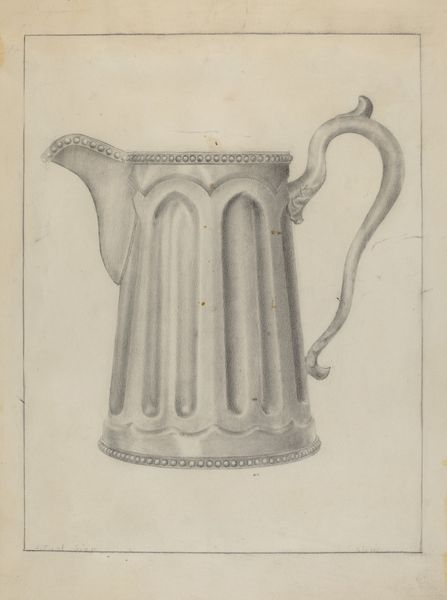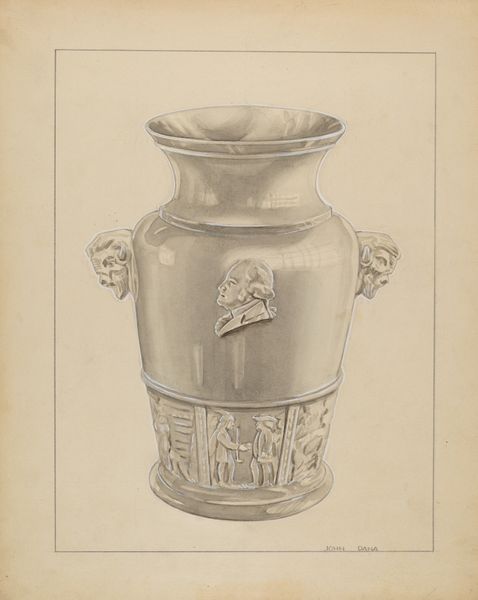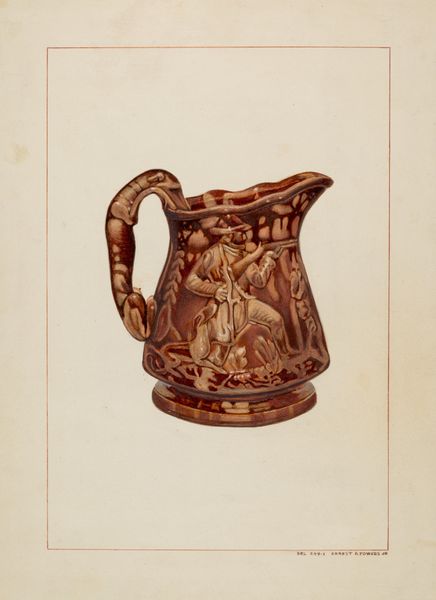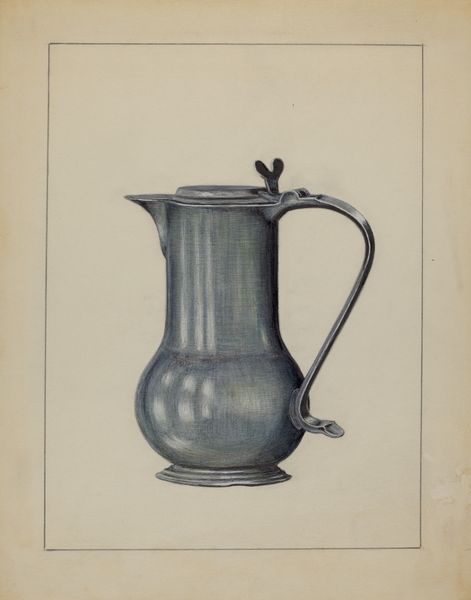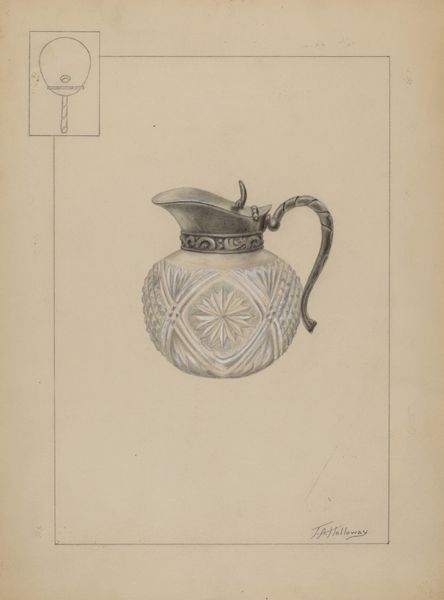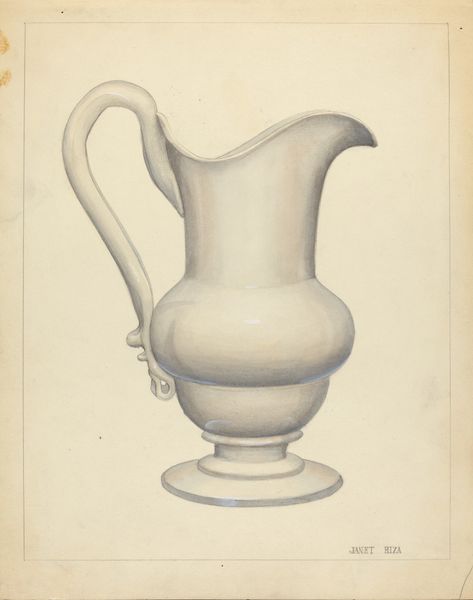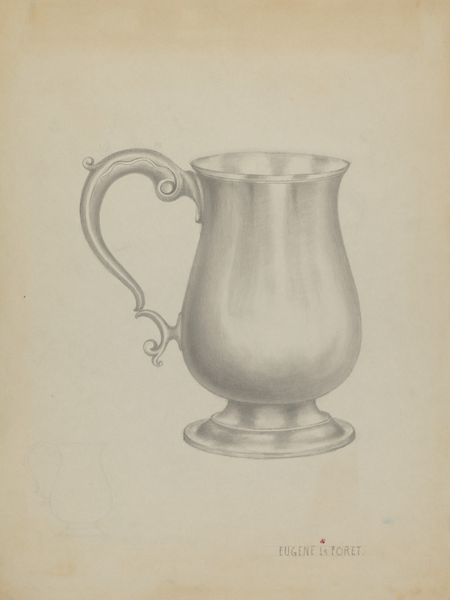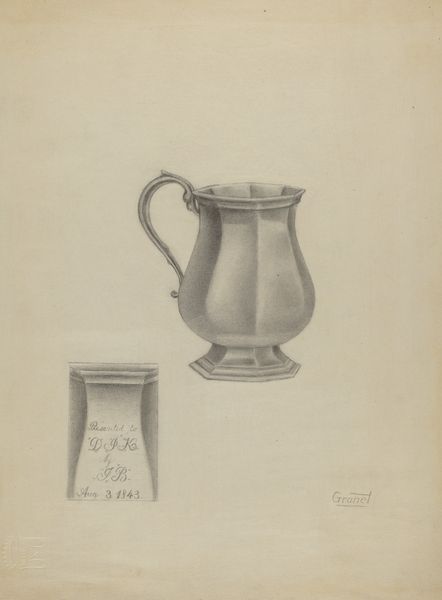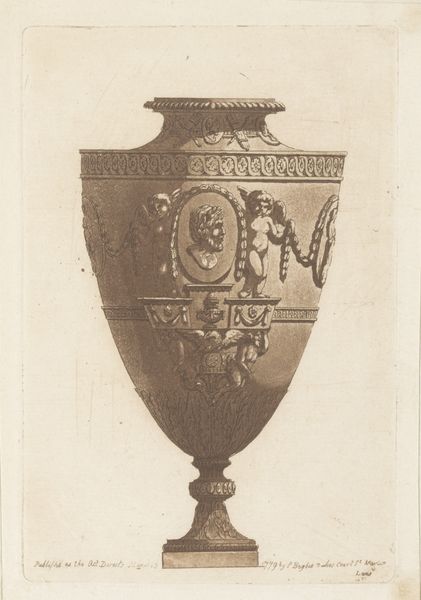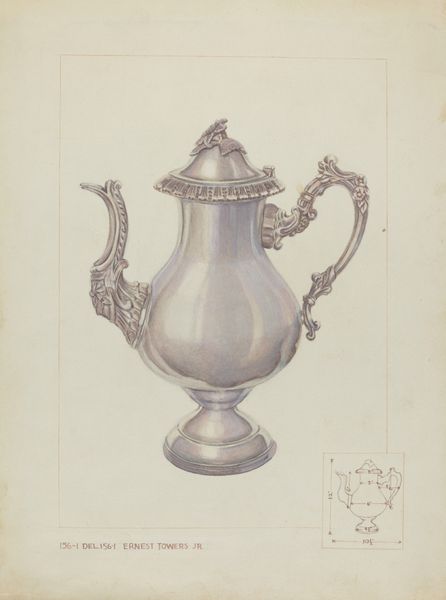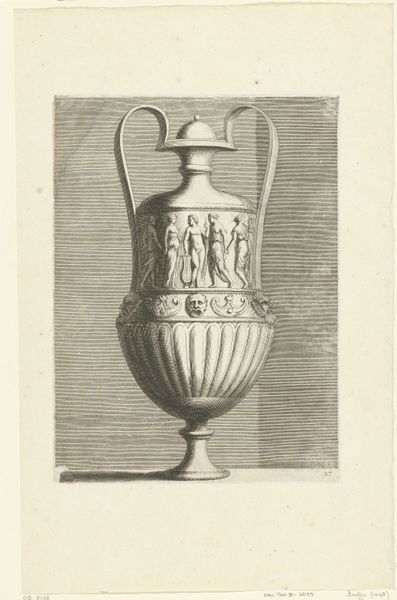
drawing, coloured-pencil, watercolor
#
drawing
#
coloured-pencil
#
watercolor
#
coloured pencil
#
academic-art
#
watercolor
Dimensions: overall: 30.2 x 22.9 cm (11 7/8 x 9 in.) Original IAD Object: 11"High 6 1/2"Wide(max) 5"Dia(base) Handle: 8" x 2 3/4"
Copyright: National Gallery of Art: CC0 1.0
Curator: Look at this delicately rendered "Bisque Water Pitcher" by Ernest A. Towers, Jr., circa 1938. It’s primarily a drawing, skillfully using watercolor and coloured pencil. Editor: It has a quaint feel; it gives the illusion of ceramic, yet the softness of the colored pencil is undeniable. Curator: Exactly. Tower's choice of medium speaks volumes about how craft was perceived at that time. He elevates this domestic object, rendering it with a traditional "high art" medium, suggesting the rising status of industrial design. I think it begs questions about how the drawing process influenced perceptions around the water pitcher. Editor: It also raises questions about functionality versus mere aesthetic pleasure. Who produced this pitcher? Where? What processes and labour did it entail to bring such object to consumers? What statements can be made of its consumption in relation to socio-economical levels of American society in the late 1930s? Curator: It is quite informative about its possible users! Notice the classicist details; this could have served specific communities and markets seeking status through design. It tells a story of American consumerism, especially because it also plays on historical images. What do you make of its symbolism, and whether it could make any comment about colonial exploitation? Editor: It all boils down to presentation, doesn't it? By imbuing a simple domestic object with what looks to be period iconography, there might have been attempts at elevating its symbolic meaning or sales, something not exclusive to that historical moment. Even now, everyday objects in museums force us to interrogate this dynamic, unveiling how our current structures shape which stories are highlighted and which ones are ignored. Curator: It seems a rather effective critique of those hierarchical systems. These works open opportunities for critical conversations about art production and circulation. Editor: Absolutely. These items trigger complex and crucial analysis of the power dynamics woven into the cultural landscape.
Comments
No comments
Be the first to comment and join the conversation on the ultimate creative platform.
